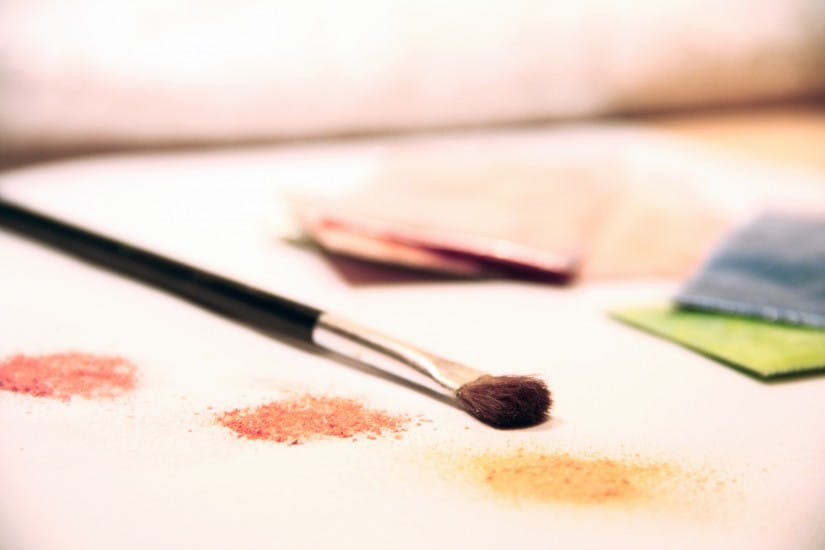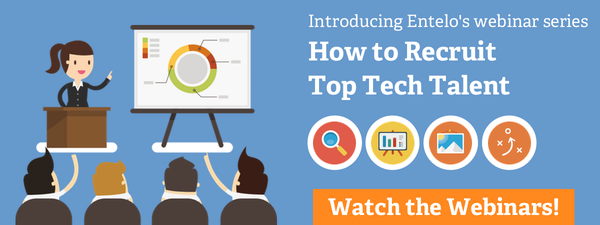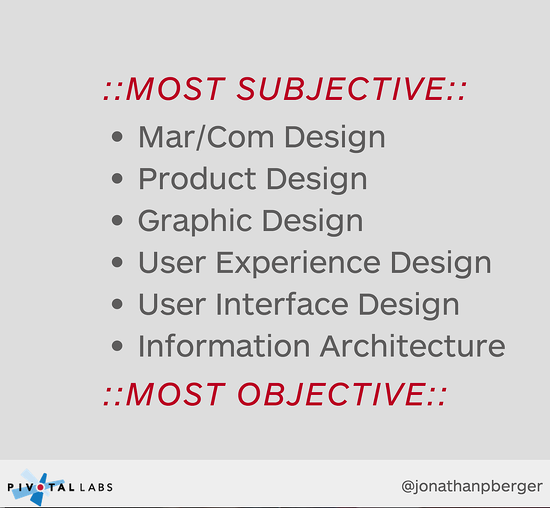 Hiring designers is just as complex as hiring engineers.
Hiring designers is just as complex as hiring engineers.
Where there are twists, there are turns. Where there are umbrellas, there are terms, and calling someone a “designer” is as nondescript as calling last night’s dinner date “nice.” You get the idea.
Depending on the industry you work in, you’re likely hardly recruiting someone who’s labeled as just a designer. There are product designers, game designers, UI/UX designers, illustrators, visual designers, web designers, interactive designers, to name a few and then some.
The process for filling an open req for the company’s creative-engineering roles doesn’t start with understanding what types of interview questions to ask, or key factors to look for in a resume – it’s taking a top-down approach and understanding how to answer:
What business goals does the company want to achieve? What type of designer is the company looking for?
If you stayed for Q&A during our webinar on hiring creative pros through the Dribbble, Behance, and Carbonmade networks, chances are you got a healthy dose of Entelo lead product designer Max Schultz sharing his experiences hiring designers and being recruited. (He’s with us – check this out to learn how to join the Entelo crew.) We weren’t able to keep him on for longer during the live event to answer all your questions, but not to fret – we answer them here, and share even more tips to help you make the right design hire for your team.
I’m interested in designers who know the .NET platform. In the sourcing process, what could you search for besides Sitecore, ASP.NET, or MVC to know if they’re probably relevant?
Short story: These are considered “old” techs, and it’ll be very difficult to find candidates who fit this criteria. Few apps are still written using ASP.NET, and .NET is a back-end technology. Sounds like you’re looking for a front-end developer with design skills – comparable to looking for a painter that knows carpentry, for example. Try sourcing these candidates the same way you’d look for a back-end engineer.
Besides Designer News, what are other sites that are good places to find designer news?
Check out this Quora post, “What are the most influential design blogs?”
If you already have a Dribbble Pro membership, is there a discounted price on job posts?
Here’s what Elizabeth from the Dribbble support team told us:
“Currently the only discounts we offer for job ads are for multiple ads (and that is regardless of whether you’re a Pro on Dribble). You can read about discounts on bulk job ads here.”
Good luck!
“Good design builds trust.” What does that mean?
One of a designer’s main roles is to influence and build trust with the company brand. What you’re hiring for is a designer who’s work is consistent, predictable, accessible, and legible. This means examining their work as a package:
- Font type and size
- Color schemes
- How the site performs and functions
- Ability for the user to connect with the site on a personal level (Stock photos versus photos of real people – does the site have personality?)
- Conventional, predictable user behaviors and patterns (Does clicking the logo take you back to the homepage? And anything else that responds as it’s expected to. Did the designer take time to test, observe, and iterate based on his understanding of the way users think and act?)
Consider an actual package, like a juice box. Would you drink out of a paper box that has “Juice” handwritten in permanent marker on the front? You probably wouldn’t consume anything that looks untrustworthy. A designer should be able to explain their thought process for creating their work. “I created (insert project) so that people would feel (insert intended emotion, behavior, reaction)”.
Before you make a hard decision that a designer’s work is either good or bad, consider the long-running debate in the space about design being subjective or objective, and loop in the original question in your hunt for design talent: What business goal is the design trying to achieve?
Jonathan Berger from Pivotal Labs addresses objective/subjective design in this blog post and this slide he shared with us from a talk he did on the same topic:
You see that in the scale above, there’s a list of varying designer roles. As each position entails different duties, so do the types of questions recruiters and hiring managers ask design talent. Here are some to get started:
Web designer
- Tell me about your experience interfacing with the engineering team.
- How did you create your portfolio? The amount of detail and depth can give you an understanding of how good they are coding.
UI/UX designer
- What’s UI? What’s UX? They should be able to explain the two differently.
- Tell me about the UI and UX practices you implemented at your company.
- Did you change anything about the product or website design to better serve the target audience? Why?
Illustrator
- Ask about the process for creating their body of work. Get a sense of their skill development over time, and an understanding of a project from start to finish, and iteration, if applicable.
- Look for sets of things – logos, vector images, for example. Did they explore more than one idea and do those designs have a high-quality, consistent style?
- How does the illustrator’s work compare to other people in your space? Will it help the company stand out, or does it look out of the place/wild compared to competitors? As these positions tend to be contracted, it’s best to communicate with the team to understand the project’s business goals.
Visual designer
- Tell me about your previous job. Tell me about some brand guidelines you created or edited. (They should know what brand guidelines are.) Their answer can go along the lines of building consistency, creating a high-quality/feel-good brand.
- What are you most proud of? This helps candidates point out one or a few things they care about most to tell you about their creation process, how users felt about the product, details about the execution, and the idea process and outcome.
- Does their work experience fall outside of your company’s industry? Ask candidates about how they worked with the business ops team to gauge their understanding of communicating design with business goals.
- Did the candidate come from a company with a “bad” design? Ask candidates about a time they found their personal brand didn’t blend well with the company brand. Look for someone who pushed back on the team because of their understanding of trustworthy, consistent design.
Across the board, recruiters should ask design candidates about who they worked with and listen to the stories designers have to tell about their clients and previous companies.
- What’s the day-to-day process?
- Take me through the thought and creation of this project. (Part of the story should be collaboration.)
- Tell me about a time you had to meet someone halfway and push back on a design. (You’re looking for a candidate who’s opinionated, but has the willingness and rationale to provide high-quality design that meets business goals, which means having to say yes or no to a demand when necessary.)
Here’s a list of additional design hiring resources we like. Check ‘em out:
- Why Design?
- What to Look for When Hiring a Designer
- How top startups pay designers
- How to Hire a Designer
- Cultivating Trust Through Web Design
- Designing to Build Trust
- How to Hire a Web Designer or Design Company
- How to Hire a Designer and Build a Design Team
- The 5 Most Common Design Mistakes
- The difference between web, interaction, UI and UX design
- The difference between interaction, visual, web, UX design, and UI development
Arguably, this post could be more than enough food for thought, but if you have a question about designer hiring or want to say hi, ping me at kathleen@entelo.com or tweet us @Entelo.
The big finale/part four of our tech recruiting webinar series is coming up. Save your seat for “3 Sites to Find Hidden Tech Talent!"


